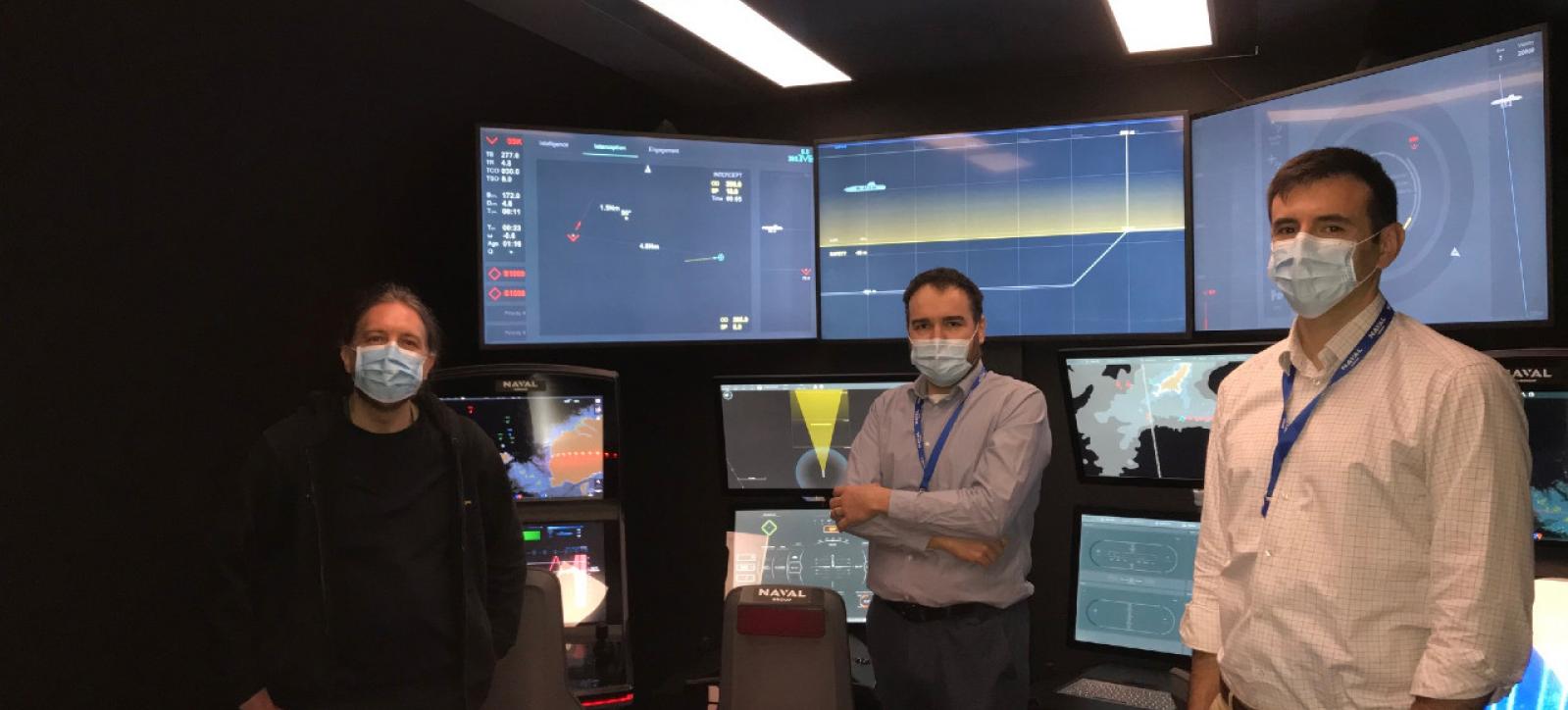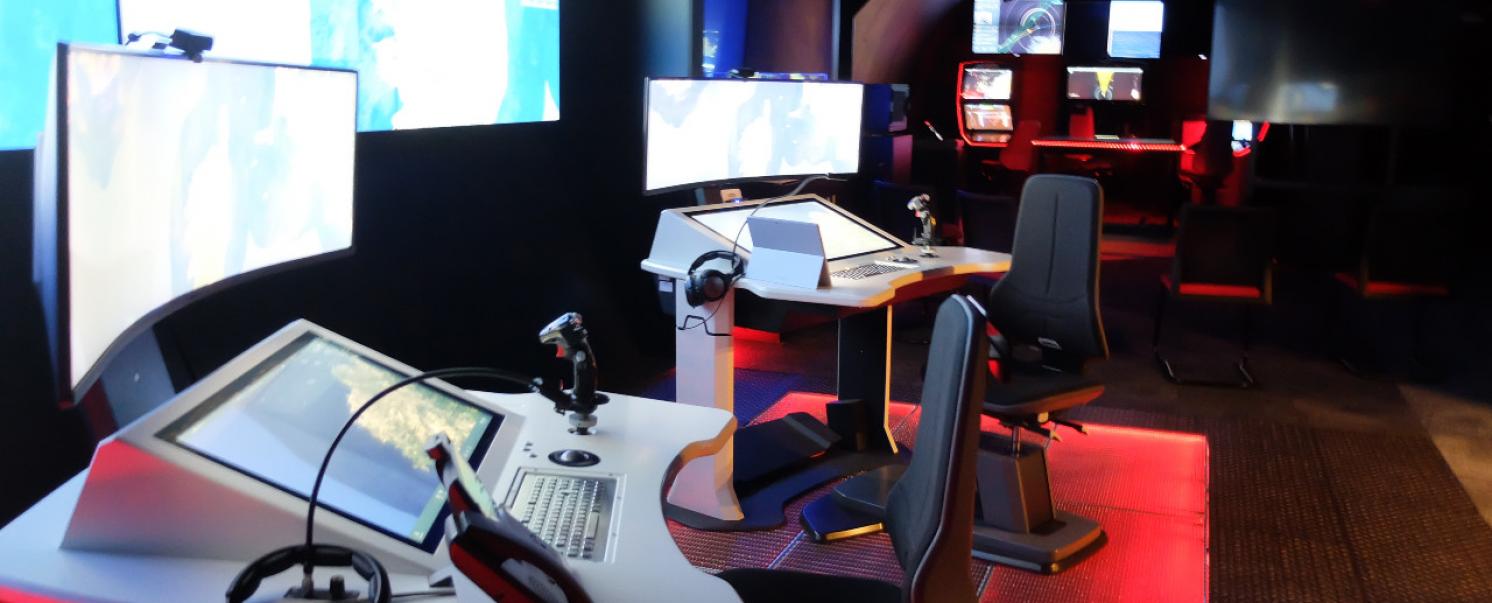In the “dark” area of the showroom, the Smart Ops Room immerses visitors in an almost space-like atmosphere. A bubble where opportunities for evolution related to immersive technologies - already familiar or in development – to elimination of the penetrating mast and to the installation of powerful on-board datacentres, have enabled the organisation and capacities for data processing and presentation to be completely redesigned according to operational requirements. “The control room of the future will be modular, simple and intuitive,” explained Philippe Berger, Product line manager for submarine systems.
Dedicated, shared space and information
“The rapid evolution of digital technology and the contribution of artificial intelligence for decision-making have encouraged us to redesign tools to exploit the mass of information collected and processed,” he continued. At each stage and for each function (of the operator console, from Commanding Officer to helmsman), the fundamental question of how to have the right information at the right time and in the right place is considered, using new, more intuitive man-machine interfaces. With fewer oral exchanges and procedures, but far more graphic illustrations - all presented in an open area - the control room of the future developed by Naval Group comprises large, flat data summary screens, a touch table and connected tablets. “All the information is shown so as to provide an immediate, shared image of the state of the submarine, in increasingly complex tactical situations.”
A 15-minute trip to the future
For the duration of the demonstration, visitors are immersed in this futuristic environment with a scenario in which they are faced with a tactical situation involving the launch of an F21 heavy weight torpedo. The Smart Ops Room – first introduced for Euronaval 2018 - has since evolved. Euronaval 2020 developments on the concept of an Extended Underwater Battlefield were integrated in January. The session ends with an animated film that opens even more advanced perspectives for work, by encouraging discussions around ideas related to new architectures and the organisation of navigation and operation functions.


